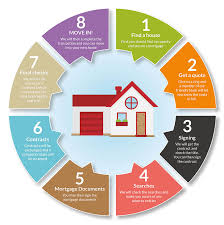Navigating the conveyancing process in the UK can initially seem daunting, especially if it’s your first time. However, with a good conveyancer by your side, the journey can be much smoother. Below, we break down the 12 essential steps involved in both buying and selling property in the UK according to experts like estate agents in London to help you understand what to expect and ensure a seamless transaction.
1. Instructing a Conveyancer
Once a sale is agreed upon, choosing and instructing a conveyancer is the first crucial step. It’s advisable to have a conveyancer lined up beforehand to expedite the process. Upon instruction, the conveyancer will send you their terms of business and conveyancing fees for review and confirmation.
2. Client Care and Welcome Pack
After choosing a conveyancer, a Memorandum of Sale is drafted by the estate agent, detailing the transaction’s key elements. This document is circulated among the involved parties, and both buyer and seller must send certified identification, such as a passport or driver’s license, and recent utility bills. Certification ensures that these IDs are true likenesses of the originals, often easily done at a Post Office.
3. The Seller’s Pack
The seller receives a pack containing various legal forms to complete, such as:
- TA6: Property Information Form
- TA10: Fixtures & Contents Form
- TA7: Leasehold Information Form (if applicable)
- LPE1: Leasehold Property Enquiries Form
- TA8: New Home Information (for new builds)
The seller must fill these forms honestly and provide documents like warranties, guarantees, and recent gas and electrical checks. It’s recommended to send these documents via recorded delivery to ensure they are tracked.
4. Beginning the Legal Process
The seller’s conveyancer prepares and sends a draft contract, along with all relevant forms and the property deeds, to the buyer’s conveyancer. Both conveyancers will conduct identification and anti-money laundering checks. The buyer’s conveyancer will review these documents and raise any pre-contract issues.
5. Conveyancing Searches
The buyer’s solicitor undertakes various searches to uncover any potential issues with the property, including:
- Title Register and Plan Checks
- Local Authority Search
- Environmental Search
- Flood Risk Search
- Water and Drainage Search
These searches, paid for upfront as disbursements, ensure there are no hidden problems. The results are compiled into a report for the buyer, detailing any significant findings.
6. Leasehold Properties
If the property is leasehold, the buyer’s conveyancer will scrutinize the lease conditions and any associated clauses. The seller’s conveyancer will handle a Managing Company Questionnaire, ensuring all queries are answered. This stage can prolong the conveyancing process due to its complexity.
7. Mortgage Offer
The buyer’s conveyancer will review the mortgage offer and conditions, ensuring everything aligns with the purchase terms. It’s crucial to have a firm written mortgage offer and, if necessary, proof of deposit funds to avoid future issues.
8. Further Anti-Money Laundering Checks
Mortgage lenders may require additional anti-money laundering checks, such as proof of the deposit’s source. These Know Your Customer (KYC) checks are standard to ensure compliance with financial regulations.
9. Pre-Contract Enquiries
The buyer’s conveyancer will raise pre-contract enquiries about the property’s legal aspects. These may involve clarifications needed after the initial searches or from the mortgage lender. The seller’s conveyancer will also review the transfer deed and prepare completion statements, detailing the financial breakdown for both parties.
10. Signing the Contracts
Once all issues are resolved, and all parties are satisfied, the buyer’s conveyancer sends the necessary documents for signing, including the draft transfer deed (TR1) and mortgage deed. The buyer needs to arrange for the deposit payment, typically 10% of the purchase price, and have building insurance in place before exchanging contracts.
11. Exchange and Completion
When contracts are exchanged, the sale becomes legally binding. The buyer’s conveyancer will arrange for the mortgage funds to be released and combined with the buyer’s deposit. The funds are then transferred to the seller’s conveyancer, who will settle any outstanding mortgage and transfer the remaining proceeds to the seller. The keys are usually handed over on completion day, and the buyer can take possession of the property.
12. Post-Completion Tasks
After completion, the buyer’s conveyancer will handle several post-completion tasks:
- Sending the documentation to HM Land Registry to update ownership.
- Paying the stamp duty to HMRC.
- Forwarding the updated deed to the mortgage lender.
- Ensuring the buyer’s name is entered on the lease (for leasehold properties).
These tasks typically take a few weeks, finalizing the property transaction and ensuring all legal aspects are covered.
Understanding these steps can help demystify the conveyancing process, making your property transaction in the UK as smooth and stress-free as possible. A good conveyancer will guide you through each stage, ensuring that all legal requirements are met and addressing any issues that may arise.







